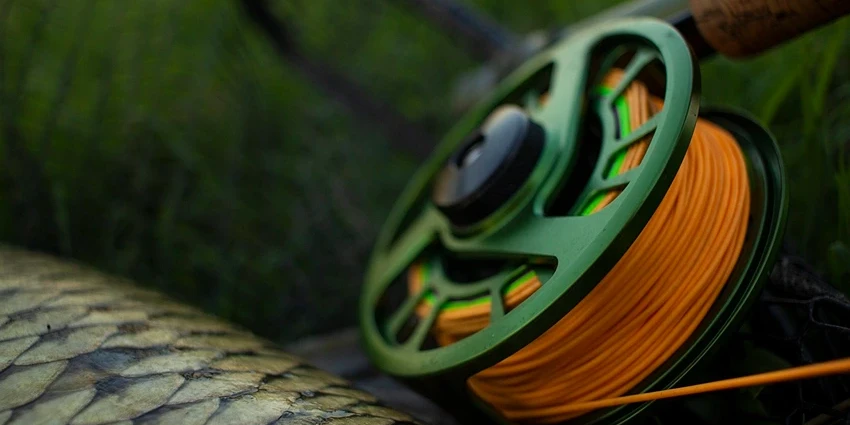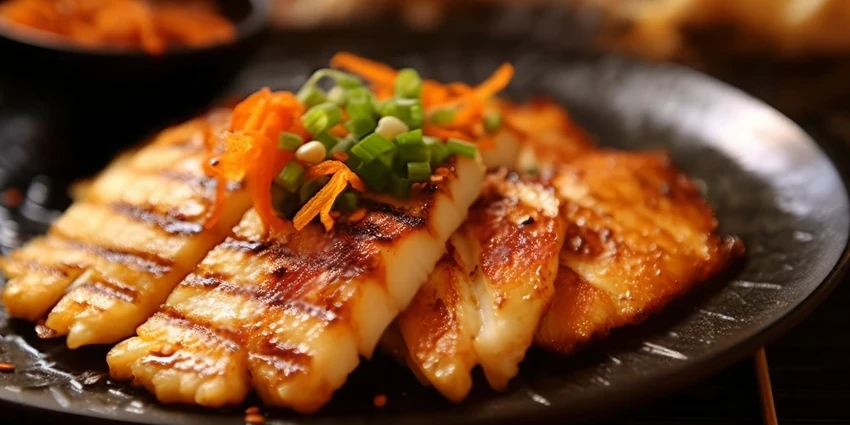All products were chosen independently by our editorial team. This review contains affiliate links and we may receive a commission for purchases made. Please read our affiliates FAQ page to find out more.
Jump to:
Can You Eat a Goliath Grouper?
While goliath groupers are not considered a common food fish due to their slow growth and protected status in some areas, they were historically harvested. However, their large size, slow reproduction, and conservation efforts have led to protections, and it is generally discouraged to eat them to help preserve their populations.
Key Takeaways:
- Goliath Groupers: Understanding their role in marine ecosystems and their current conservation status.
- Historical and Cultural Significance: Tracing the journey from a popular catch to a protected species.
- Legal and Conservation Efforts: Analyzing the laws, regulations, and initiatives protecting this species.
- Culinary Aspects: Exploring the edibility, taste profile, and cooking methods of Goliath Grouper.
- Ethical and Environmental Considerations: Addressing the dilemmas and impacts of consuming endangered species.
Introduction to Goliath Grouper
The Goliath Grouper, a colossal fish inhabiting tropical waters, has sparked intrigue and debate among anglers, chefs, and conservationists alike. This massive fish, scientifically known as Epinephelus itajara, can grow up to 800 pounds and 8 feet in length, making it one of the largest bony fish species in the Atlantic Ocean.
Importance in Marine Ecosystems
Goliath groupers play a crucial role in marine ecosystems. As top predators, they help maintain the balance of marine life in their habitat. These groupers predominantly reside in coral reefs, mangroves, and estuaries, contributing significantly to the health and diversity of these ecosystems.
Current Conservation Status
Goliath groupers are currently classified as critically endangered by various conservation organizations. Overfishing, habitat loss, and slow reproductive rates have contributed to their decline. Efforts are underway to protect and restore their populations, with specific regulations in place in regions like Florida, the Caribbean, and the Gulf of Mexico.
Historical and Cultural Significance
History of Goliath Grouper Fishing
Historically, Goliath Groupers were a highly sought-after catch for both commercial and recreational fishermen. Their large size and value made them a popular target. However, decades of overfishing led to a significant decrease in their numbers.
Cultural Significance
In various cultures, particularly in coastal communities, Goliath Groupers have held a place of reverence and have been a staple in local cuisines. The shift from a commonly fished species to a protected one reflects a broader change in societal attitudes towards marine conservation.
Shift from Popular Catch to Protected Species
The transition of the Goliath Grouper from a widely hunted fish to a protected species is a testament to growing environmental awareness and conservation efforts. This shift has been driven by the realization of the fish’s role in the ecosystem and the need to preserve it for future generations.
Legal Aspects and Conservation Efforts
Laws and Regulations
In the United States, particularly in Florida, strict laws have been enacted to protect Goliath Groupers. These include bans on catching and retaining these fish in federal and state waters. Other countries in the grouper’s range have implemented similar measures.
Conservation Efforts and Their Impact
Conservation efforts include habitat restoration, research, and monitoring populations. These efforts have shown positive results in some areas, with reports of gradual increases in Goliath Grouper populations.
Florida’s Controlled Harvest Program
Recently, Florida has implemented a controlled harvest program, issuing a limited number of permits for catching Goliath groupers. This program aims to balance conservation efforts with controlled, sustainable fishing practices.
Culinary Aspects of the Goliath Grouper
Edibility and Taste Profile
Goliath groupers are known for their dense, slightly salty, and sweet taste, similar to other grouper species. The fish’s texture and flavor make it suitable for various culinary preparations.
Popular Cooking Methods and Recipes
Goliath grouper can be prepared in several ways, including grilling, baking, and making stews and chowders. Its firm flesh absorbs flavors well, making it versatile for different cuisines.
Health Benefits and Risks
While grouper meat is nutritious and high in protein and omega-3 fatty acids, larger and older Goliath groupers may contain higher levels of mercury, posing health risks. Hence, it’s advisable to consume smaller, younger fish.
Health Benefits and Risks
While grouper meat is nutritious, high in protein and omega-3 fatty acids, larger and older Goliath Groupers may contain higher levels of mercury, posing health risks. Hence, it’s advisable to consume smaller, younger fish.
Ethical and Environmental Considerations
Ethical Dilemmas in Consuming Endangered Species
The consumption of Goliath Groupers raises ethical questions, given their endangered status. Balancing culinary interests with conservation efforts is a complex issue that requires thoughtful consideration.
Environmental Impact of Overfishing
Overfishing by Goliath groupers has had significant environmental repercussions. It not only affects the population of the species but also disrupts the ecological balance in their habitats.
Sustainable Alternatives to Goliath Grouper
Given the conservation status of Goliath groupers, seeking sustainable alternatives is crucial. Other grouper species, like Black and Red groupers, offer similar taste profiles and are more sustainable options.
Table 1: Goliath Grouper Quick Facts
| Fact | Detail |
| Scientific Name | Epinephelus itajara |
| Maximum Size | Up to 800 pounds and 8 feet |
| Habitat | Tropical waters, coral reefs, mangroves, estuaries |
| Conservation Status | Critically endangered |
| Legal Status | Protected, with controlled harvesting in specific areas |
| Culinary Use | Suitable for various recipes, best when small |
Table 2: Ethical and Environmental Considerations
| Consideration | Description |
| Ethical Dilemma | Consumption vs. conservation of an endangered species |
| Environmental Impact | Effect of overfishing on ecosystems and species balance |
| Sustainable Alternatives | Other grouper species as culinary substitutes |
Register for our latest in-depth reviews and product round-ups from the experts
Enter your email address below to receive our twice monthly reviews emails.
By entering your details, you are agreeing to our terms and conditions and privacy policy. You can unsubscribe at any time.
Frequently Asked Questions
While Goliath Groupers are protected in many regions, certain areas like Florida offer limited, regulated fishing opportunities under specific programs.
Larger, older Goliath Groupers may accumulate higher levels of mercury, posing health risks. It’s recommended to consume smaller, younger fish.
Goliath Grouper is known for its dense, slightly salty, and sweet taste, comparable to other grouper species but with a unique flavor profile.
Grilling, baking, and stewing are popular methods. Their firm flesh absorbs flavors well, making them versatile for various culinary preparations.
Yes, other grouper species like Black and Red Groupers are considered more sustainable alternatives with similar taste profiles.
Sustainable Fishing Practices
Encouraging sustainable fishing practices is crucial for the protection of Goliath Groupers and the overall health of marine ecosystems.
Responsible Angling
Focusing on catch-and-release techniques, especially for larger Goliath Groupers, helps preserve their populations and maintain ecological balance.
Supporting Conservation Efforts
Supporting organizations and initiatives dedicated to marine conservation can contribute significantly to the preservation of Goliath Groupers and their habitat.
Choosing Sustainable Seafood
Opting for sustainably sourced seafood is a practical step towards supporting marine conservation and responsible fishing practices.
Tables:
Table 3: Goliath Grouper Fishing Regulations
| Region | Regulation | Impact |
| Florida | Controlled harvest program | Balances conservation with regulated fishing |
| U.S. Waters | Complete ban on catching and retaining | Preserves populations |
| International | Varies by country | Depends on local conservation efforts |
Table 4: Sustainable Seafood Alternatives
| Alternative | Description | Taste Comparison |
| Black Grouper | Sustainable option | Firm texture, mild flavor |
| Red Grouper | Another sustainable choice | Slightly milder than Black Grouper |
| Other Species | Various other sustainable fish | Diverse flavors and textures |
Martin Cochran, renowned for his expertise in deep-sea fishing and marine wildlife, plays a pivotal role at Fresh Catch Daily. His adventures across various oceans have equipped him with unique insights and techniques, enriching our platform with diverse and engaging content for fishing enthusiasts.











